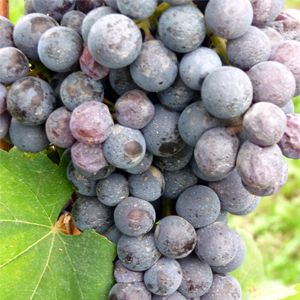 DELIVERY FROM £4.95
DELIVERY FROM £4.95 FREE DELIVERY FOR ORDERS OVER £100
FREE DELIVERY FOR ORDERS OVER £100Home » Community » Wine and Grape Guide » Nebbiolo

Nebbiolo is a native grape from Piedmont and is behind some of the best and most famous red wines, from Barolo to Barbaresco, the most famous, to Ghemme or Sforzato della Valtellina.
There are two main theories behind the origin of the name Nebbiolo. Both theories say that the name derive from "nebbia", fog in Italian, however, one theory is based on the abundant bloom covering the grapes whilst the other on the harvesting time, the grape is harvested in late October when the vineyards are surrounded by the morning mists.
Certainly this is the most valuable red grape among the Italian grapes. The Nebbiolo grape is cultivated in Piedmont, around the villages of Barolo and Barbaresco produce the homonymous wines, and in Lombardy, in Valtellina where it produces the Sforzato della Valtellina. It is also grown in other regions, but it does not produce grapes with the same characteristics. There are three major clones of the Nebbiolo grape, Lampia, Michet and Rose’ and the majority of wine growers now prefer grow all of them to give the final product a greater complexity.
The Nebbiolo grape is also widely grown and produced in the nearby Aosta Valley, where it is called Picoutener, while in the Piedmont areas of Boca, Bramaterra, Fara, Gattinara, Ghemme, Lessona and Sizzano is called Spanna.
The Nebbiolo berry is black, medium, round-elliptical, thin but with tough, dark purple, very waxy skin. The bunch is medium-large, elongated pyramidal, winged, rather compact. The Nebbiolo grape has a medium size leaf, pentagonal-orbicular, three-lobed, green matte bottle color and is very demanding in terms of land and sun exposure, with remarkable brightness and not too dry soils.
The Nebbiolo is a late ripening grape and gives lightly coloured red wine very similar to the Pinot Nero, with floral and balsamic notes of liquorice, highly tannic when young, with a good alcohol content and acidity, qualities that make it particularly suitable for aging.



Before we say ciao, why not join our newsletter & stay up to date on everything happening on planet Italyabroad.com